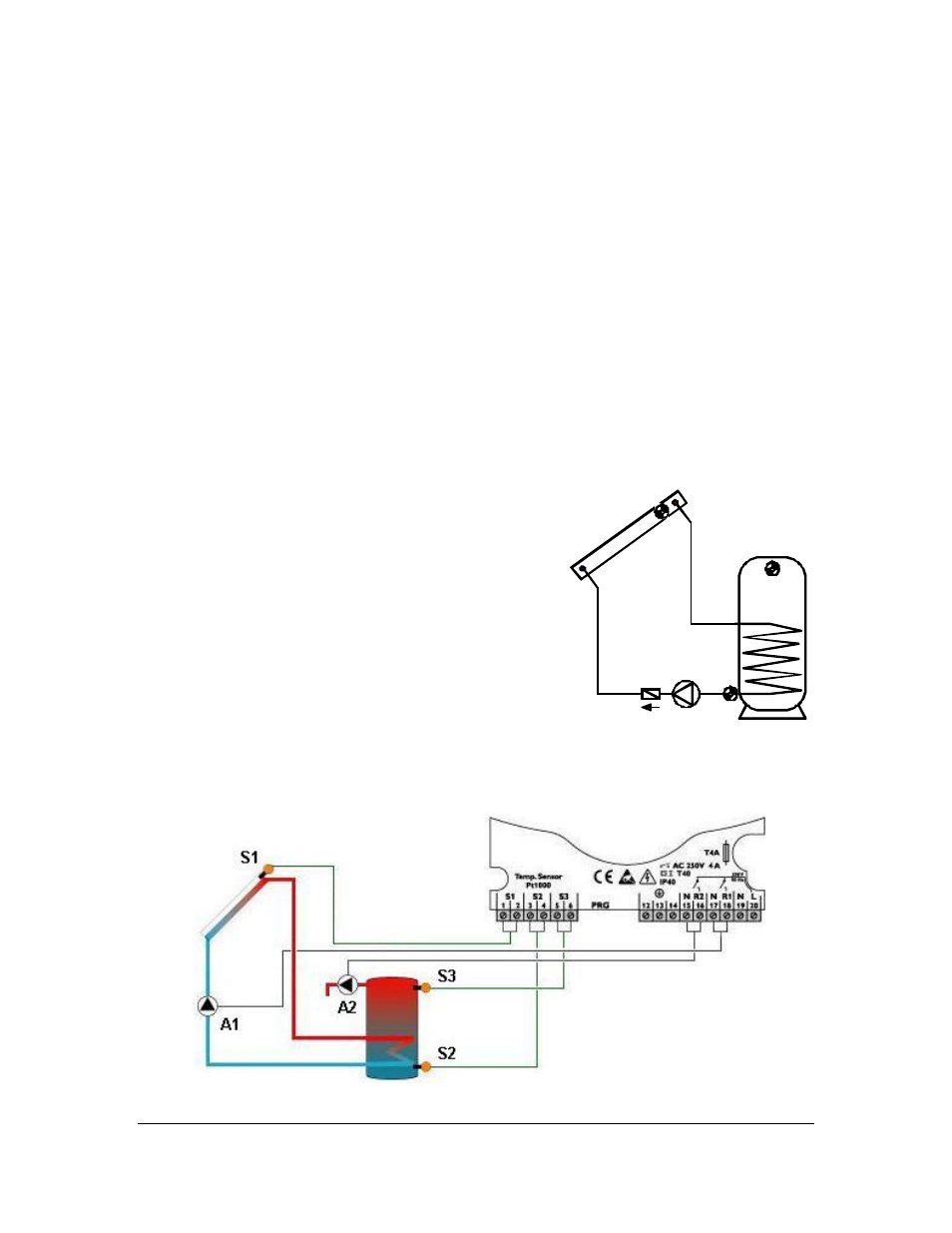Introduction – Thermo Technologies USDT 3000 User Manual
Page 2

1
Introduction
he USDT 3000 unit is a multifunctional temperature differential controller. It can be used
in a wide range of applications. At the factory, it is set to control a standard solar water
heating system with an auxiliary relay to divert surplus heat. The auxiliary relay can be used to
maintain the tank temperature. It can protect the system from overheating or using another heat
source to heat the storage tank. The controller has inputs for three PT1000-sensors. A 3-key-
panel below a large LCD serves as the user interface. Simple icons give information about the
function and operational mode of the controller and the system performance.
Principle of Operation –
In the simplest form the solar system needs two sensors. One is
positioned at the collector, S1, to monitor the collector temperature (T
C
). The second is positioned
at the location S2 such that it measures the temperature of
the heat transfer fluid inflowing into the collector. (T
S
,
bottom of the storage tank after the storage tank extracts
the heat from the collector.) As the sun shines on the
collector, the collector sensor picks up the temperature rise
while the return sensor (T
S
) remains at the existing
temperature. The difference between these two
temperatures is referred to as delta T. The solar pump A1
runs while delta T exceeds the adjustable temperature
difference. To avoid overheating, the Auxiliary relay (R2)
can be used to divert the surplus energy if the tank sensor
S3 reaches its set point.
The pump A1 runs only when the temperature at the
collector sensor location S1 is higher than the return temperature at location S2 by at least delta
T. The pump stops if delta T is less than the preset value:
A1 (ON) only for S1 > (S2 + Delta T)
The third sensor can be used for temperature monitoring of the tank and activation of R2 relay as
the above example shows. Its function is totally independent from controller operation condition.
T
S1
S2
A1
S3
